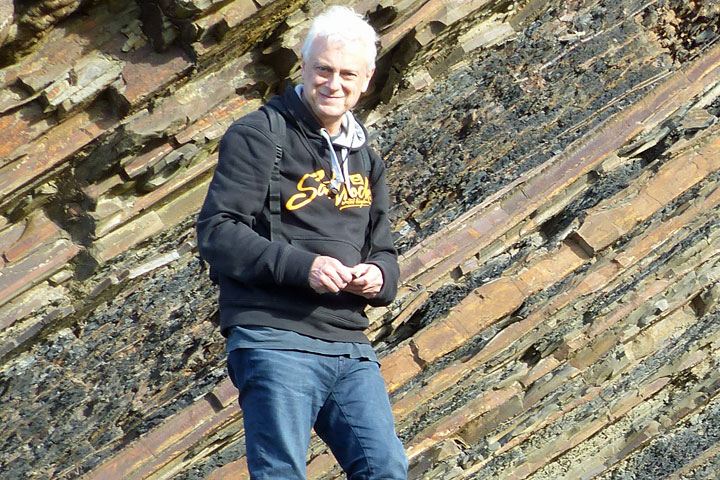


John Nunn is one of my oldest friends in chess — actually the fourth oldest titled player with whom I have maintained a long-term friendship. In case you are curious: the first was IM David Levy, about whose computer challenge I made a science documentary for German TV in 1979; the second was GM Helmut Pfleger, who did the commentary for it in our TV studio; the third was the youngest IM in history (at the time), Nigel Short, whom we featured in a second documentary on computers and human thinking in chess, and who became part of our family; and finally Nigel's second at the World Junior Championship in Dortmund, 1980, where Nigel finished as runner-up. That was John Nunn, a grandmaster who subsequently visited our home regularly — more than 30 times over the years.
(The fifth long-term titled friend, incidentally, was a 17-year-old who approached me on the street during the Junior Championship in Dortmund with the words: "Five to three, draw you win, five dollars a game?" He had cleaned out all the other participants, giving them five minutes to his three and draw odds. Now he speculated that Nigel and John's friend might be a suitable victim. No way, I told him, I know who you are. It would be like a bunny rabbit taking on a Tyrannosaurus.)

All in the family: Nigel Short and John Nunn playing boules in our garden in Hollenstedt; Helmut Pfleger working on chess in the background. Birgit on the left is now a chemistry PhD who designs the fuel system of Airbus aircraft; Ingrid, on the right, is my longanimous wife who has had to put up with countless chess players in our home.
During his visits in Hollenstedt, Germany, John introduced us to "proper" computers (like the BBC Micro) and fed my two sons the latest and finest software programs. During his many stays he also helped with the work of the startup company ChessBase, actually packaging programs with me on our dining table. Naturally he was an early beta tester and one of our first users — and during the launch years he provided openings surveys for ChessBase Magazine.
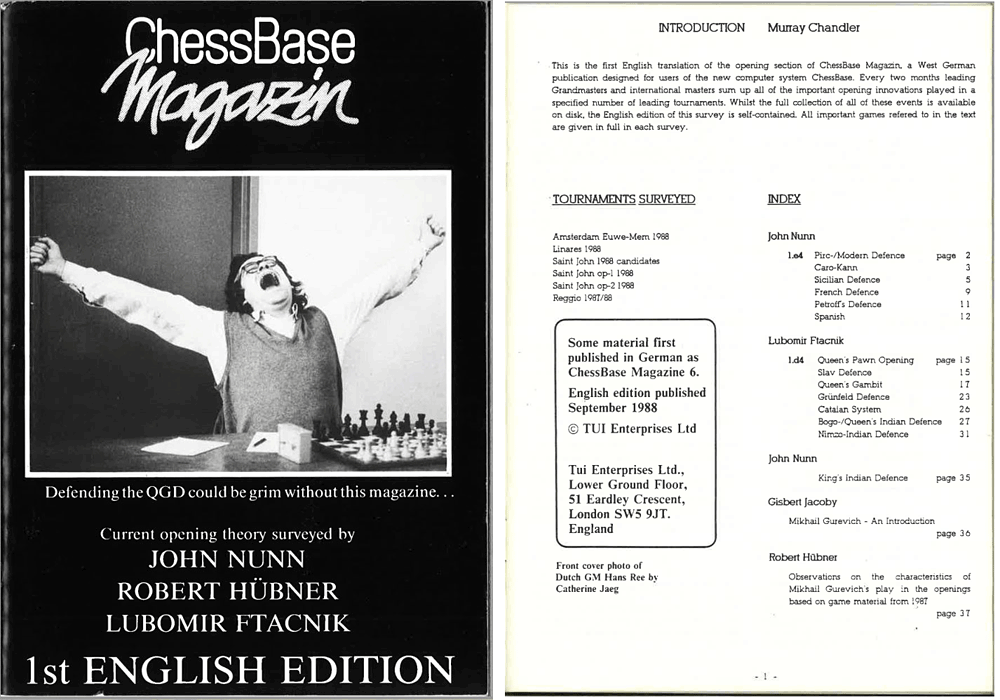
ChessBase Magazine 1/1988 (click to enlarge)
The cover page reads:
This is the first English translation of the opening section of ChessBase Magazin, a West German publication designed for users of the new computer system ChessBase. Every two months leading Grandmasters and international masters sum up all of the important opening innovations played in a specified number of leading tournaments. Whilst the full collection of all of these events is available on disk, the English edition of this survey is self-contained. All important games referred to in the text are given in full in each survey.
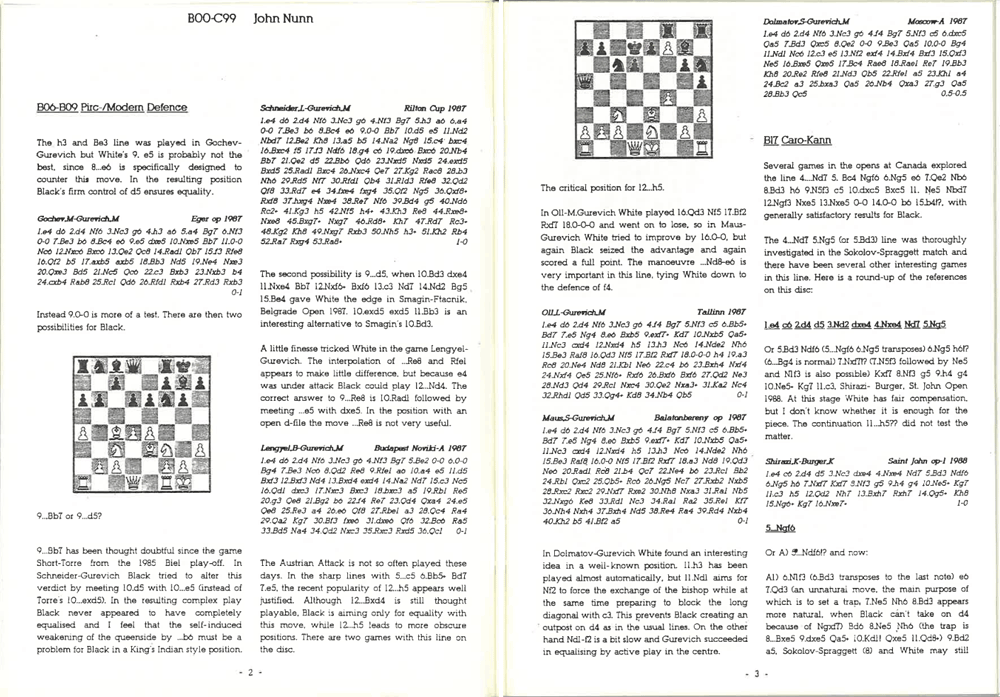
It contained 14 pages of openings survey (B00-C99, E60-E99) by John Nunn
Almost thirty years later: John and his wife Petra, who is a WFM, remain close friends whom we see once or twice a year. This time it was on a lovely trip to Cornwall, in the south-west of England, where they often spend their vacations. I want to use this article to show you how John and Petra pass their time these days.
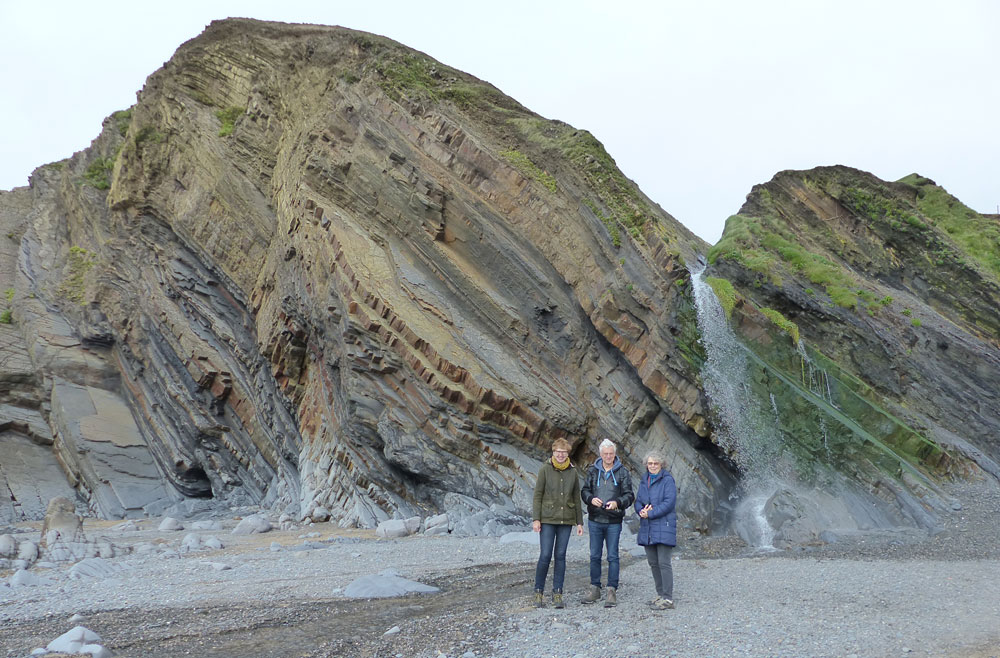
Cornwall is a tectonic dream — did I mention that my wife Ingrid, above right, is a geologist?
Rarely do you encounter sedimentary and metamorphic layers at such close quarters (click to enlarge). Rarely will someone take 1000+ pictures (mainly of rocks!) on a single vacation.
John, too, takes a keen interest in what the geologists are getting so worked up about
Driving to and around Bude in Cornwall is an experience in itself. Typically for John he is never satisfied with simple comments — everything is a puzzle, something to ponder. Here are some examples:
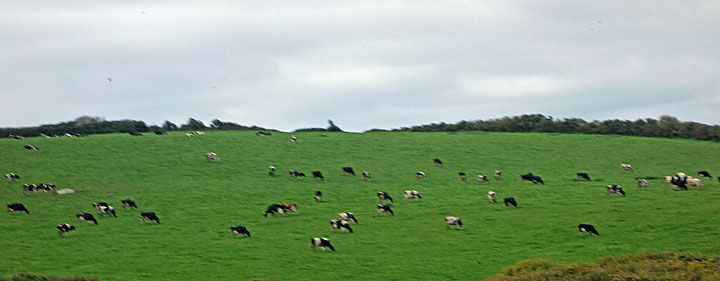
Why do cows all face the same direction, when grazing on fields? You may have noticed, but never lost much thought on the matter. John, of course, has read up on the current theories — the main one: cows have a special "sixth" sense and line up with the earth's magnetic field — and the criticism thereof. And he has one of his own. After driving past these cows in a Cornwall meadow (picture above) I couldn't resist summarizing our conclusions in a private blog post.
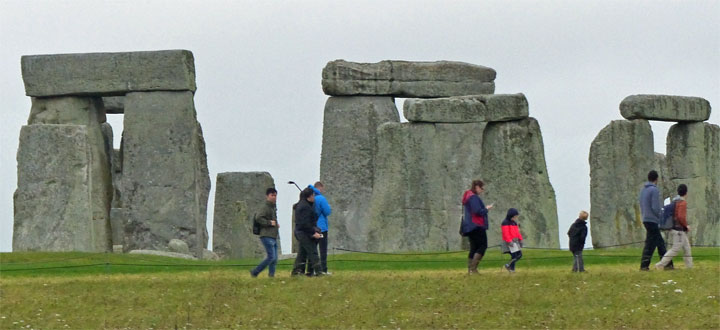
On the trip we found some rocks piled on each other — clearly not a geological formation. Here too John has his own theory: Stonehenge was not a religious or astronomical construction, as most experts believe. It was a PR stunt designed to enhance trade. The builders used it to make the prime marketplace in the south-west of the island, truly majestic and visible from a great distance. Of course we spent a lot of time debating how Stonehenge was built (my theory: they piled up dirt into a flat hill, dug holes in it, dragged the rocks up to the holes, dropped them in and finally removed all of the dirt). John agrees, says it is fairly well established that that was the way they did it.
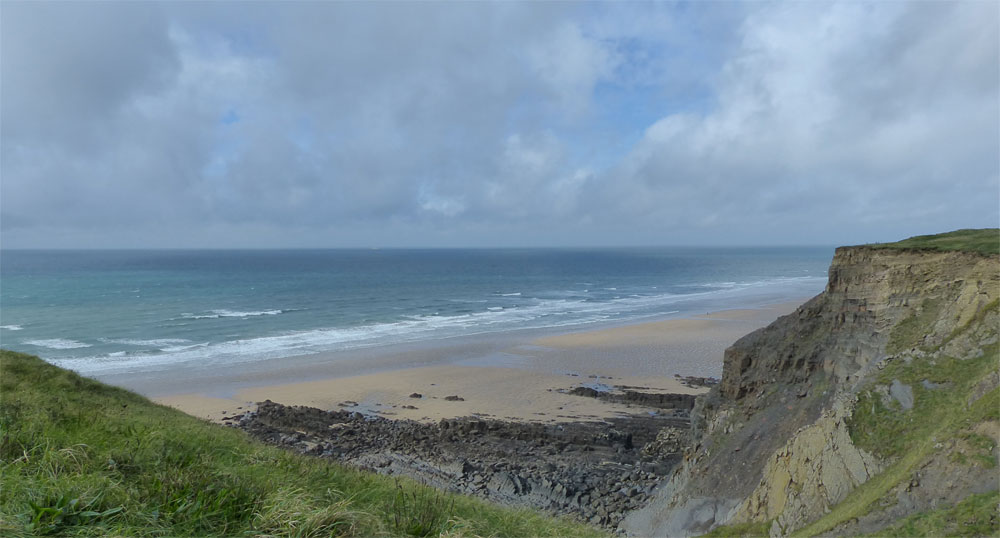
The beautiful beaches of Cornwall were also a place to experiment with the latest camera technology. I was showing off the 24x optical zoom of my Lumix FZ 200 bridge camera, pitting it against Petra's advanced Sony compact. "So what's the name of the ship on the horizon?" he asked sarcastically. If you enlarge the above image you will see a microscopic image of the ship just left of the middle.
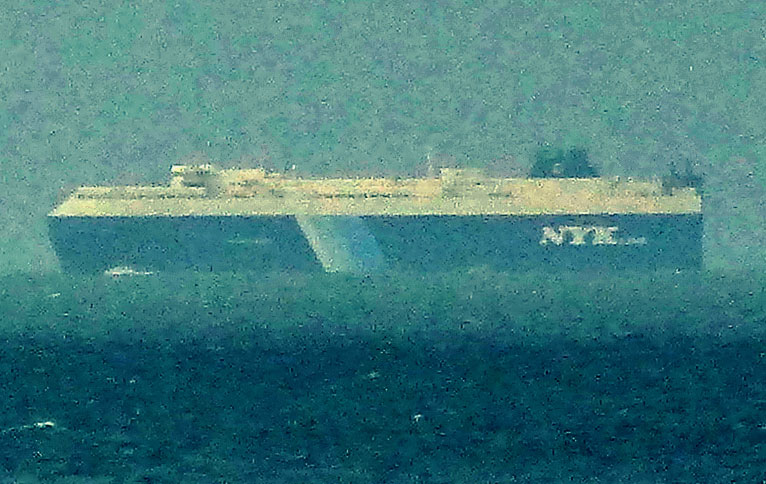
Well, resting the camera on a ledge, using full zoom, clever settings and some image processing that evening I was able to answer the question: it was an NYK Line vessel – (above my picture, and here a close-up in a harbour). Shows you how far we have come since the lawn boules days of the first picture in this report.
One more Cornwall story, before we come to the chess. Walking down the many miles of pristine beach (click to enlarge) John and Petra came across this:

John said to me: "I wouldn't touch it." Which I duly did, to set it up for the above picture. That evening I lost all feeling in my right index finger, the one I had used to move the mysterious creature into position. Back in the cottage John checked it on the Internet and had the solution: it was a Portuguese Man of War, and the news was full of warnings about them being washed up on Cornish beaches. They wanted to take me to hospital, but thankfully the finger slowly recovered, and I was soon able to type u, j and n once more.
So what do John and Petra do in their free time these days? Petra actually went out one evening in Bude to take part in a chess tournament there, and John was invited by neighbours to a session of welly wanging.
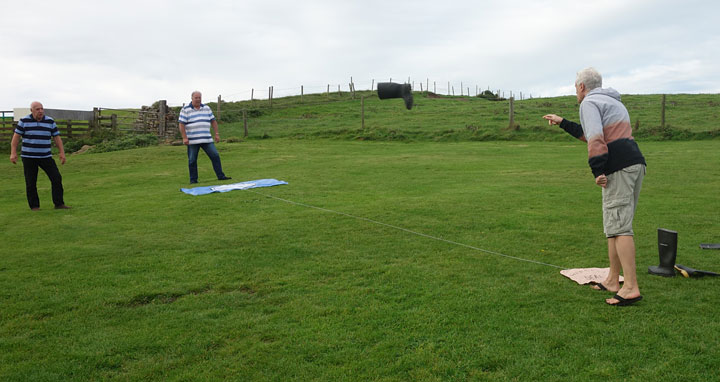
You haven't heard of this important British pastime? Competitors are required to hurl a Wellington boot onto a square goal, getting three tries each. It is a demanding sport requiring a lot of skill and practice.
So now, at last, to the chess. John, Petra and I spent a lot of time working on the game — but not on openings theory, tactics, analysis. John is very involved with chess problems, composing and solving. He has written one of my all-time favourite chess books, Solving in Style, and has won multiple World Chess Solving Championships, in 2004, 2007 and in 2010. Actually he is the third person ever to gain both over-the-board and solving GM titles (the others are Jonathan Mestel and Ram Soffer; Bojan Vuckovic became the fourth in 2008).
So how to keep it up, how to compete against the new generation, mostly youthful Polish solvers?
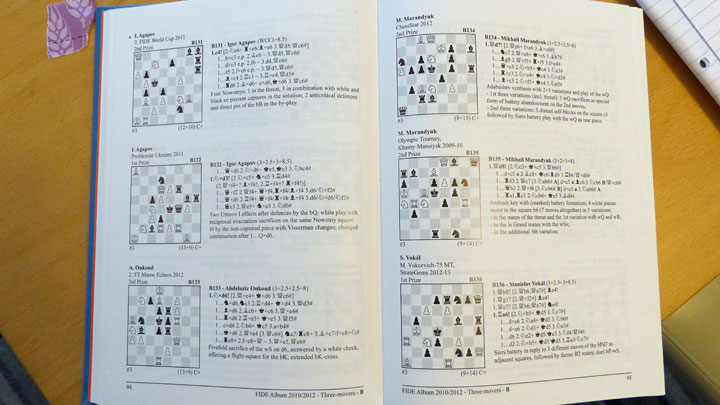
With practice! In Cornwall John was constantly solving problems from the FIDE Album 2010/2012, always covering up the right side with the solutions, and marking the problems he had solved with a dot. This time he was concentrating on helpmates and thankfully shared a few with Petra and myself.
I have always loved helpmates. The ultimate goal in chess is to checkmate your opponent, but this very rarely happens in over-the-board play. And when it does it is usually a mundane mate: back rank or something like that. Conventional chess problems deliver some clever examples, but there it is mainly about threats and defence, and mating in a set number of moves. Helpmates, on the other hand, take you into a magic world of all the different checkmates that are possible in the game. Here are three that Petra and I solved in Cornwall. You should try to work out the solutions yourself — I will be publishing them in a week, together with some (chess related) logical and mathematical problems John gave us, and a selection of his own chess compositions.
In helpmates Black starts with the first move, and helps White mate in the specified number of moves. So here your solution will be 1... black move 2. white move, black move 3. white move mate. Essentially you are asked to make two legal moves by both sides to construct a position in which Black is mated. In this case there are multiple solutions, which often happens in helpmates. If you find them both you will appreciate the thematic point of the twin solutions. They add to the beauty of the problem.
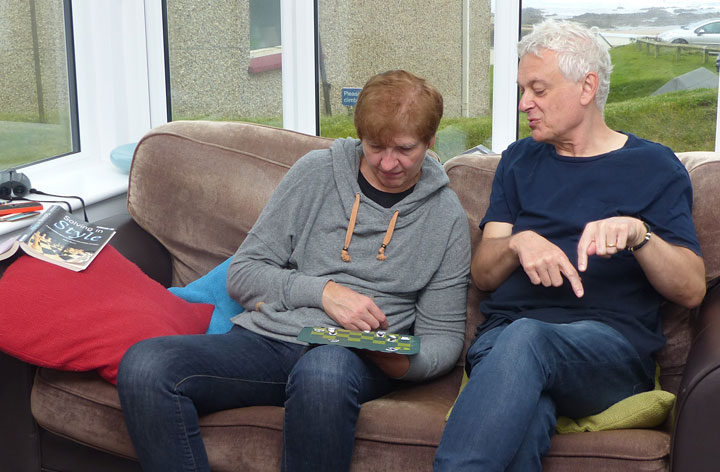
Incidentally we solved this problem after John had told us to think about the two focal points (the "hot spots") in the position. They are c4 and c5 — both squares can be attacked by two pieces. That was a big help.
Here you have to play six half-moves, starting with black, to construct the mates. Guess which piece is going to deliver them. And think about why the three solutions make the problem thematically especially beautiful.
Again three thematically linked solutions. This problem is splendid and was especially difficult for us to solve. "The black king is safe, White has too little material and Black too many defensive pieces!" I protested. I got it after John instructed me to think about which square the black king must be on to suffer a mate. And he told me that Black must actually reduce the white attacking force to make it possible. A couple of hours later I had it — and it felt sooo good.

Abdelaziz Onkoud | Photo: John Upham
John told us a little about the composer: Abdelaziz Onkoud is a Moroccan chess player, twice a member of the Moroccan Olympiad team. He is an avid problem composer, author of more than 3000 studies and problems, and the winner of a number of prizes for them. He has a personal "Présentation" on his onkoud.com web site (in French — but you can read the Google translation. I want to give you one of his conventional studies to solve:
Try to figure out what White's strategy will be in this relatively innocent-looking position, and try to find a way to execute it. You will be enchanted — like me, when I solved it, all by myself!
John Nunn is a director of Gambit Publications, a leading chess book publisher. They have some interesting new books out this year.
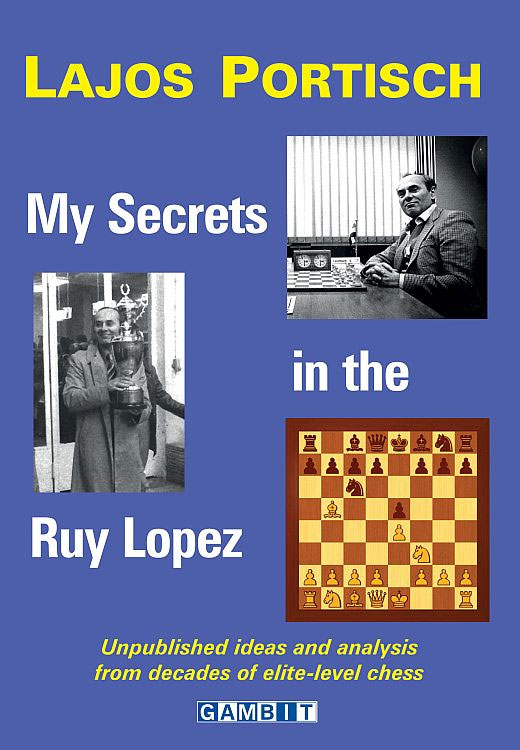 In his day, Lajos Portisch was known for his meticulous opening preparation and in this book he opens his files and shows how key ideas in the Ruy Lopez have evolved from the 1960s to the current era. See GambitBooks.com for more information.
In his day, Lajos Portisch was known for his meticulous opening preparation and in this book he opens his files and shows how key ideas in the Ruy Lopez have evolved from the 1960s to the current era. See GambitBooks.com for more information.
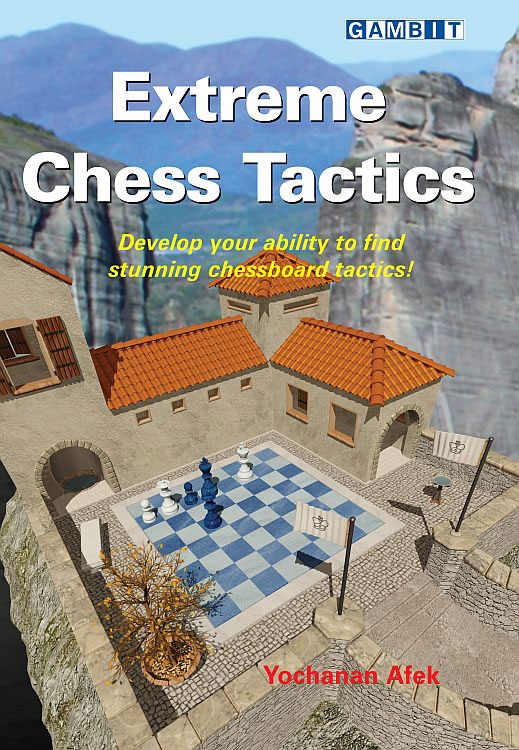 Yochanan Afek, a Grandmaster of Composition and an over-the-board International Master, explores the world of extreme chess tactics, using a host of entertaining examples from over-the-board play and the world of endgame studies. See this page for more information.
Yochanan Afek, a Grandmaster of Composition and an over-the-board International Master, explores the world of extreme chess tactics, using a host of entertaining examples from over-the-board play and the world of endgame studies. See this page for more information.
These two Gambit books are available in print, Kindle and app form. Using the app, which is available for iOS and Android devices, you can play over all the moves on-screen.